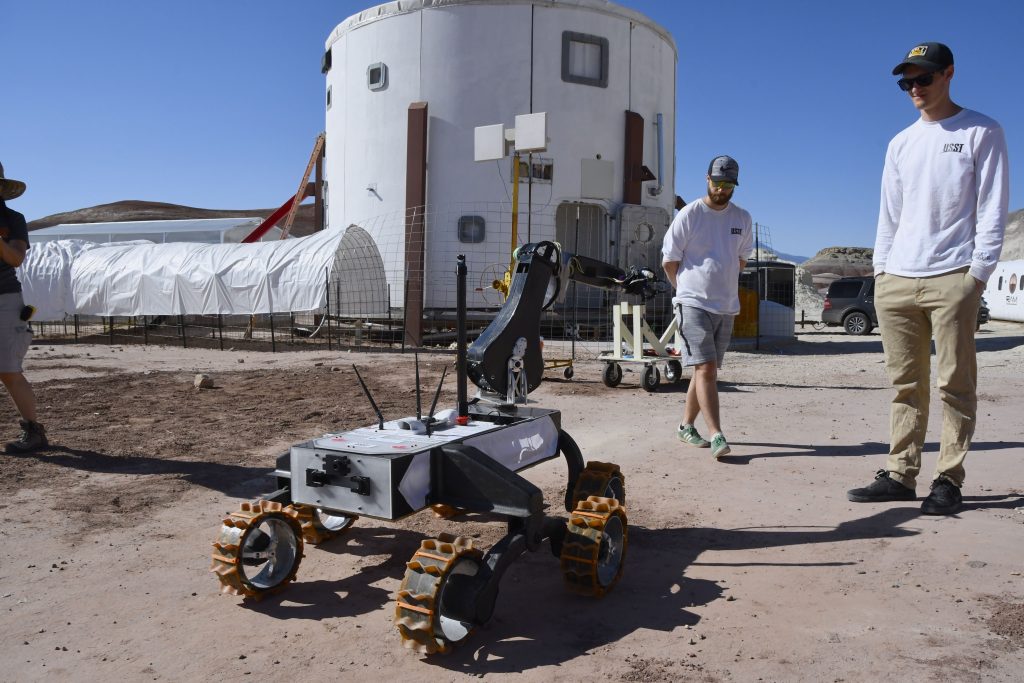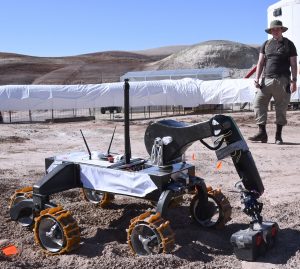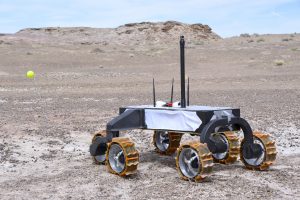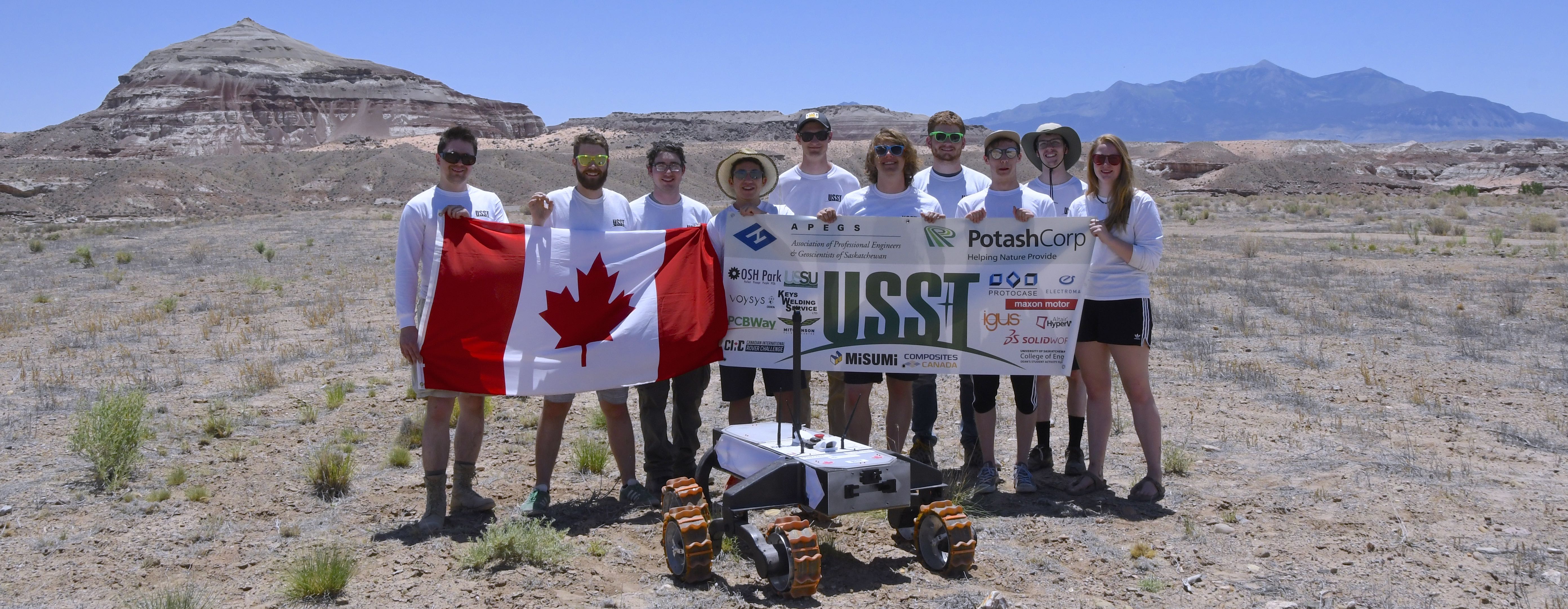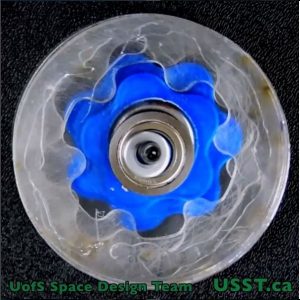Our team has just returned from competition in Utah, placing 18th out of 98 teams.
The extensive use of carbon fibre on our rover has lead to a larger and lighter rover with an extremely low centre of gravity. This lead to an outstanding rock and sand dune climbing ability and made the rover an incredible machine to drive through the desert.

The Mars Desert Research Station Habitat, (Image Credit: Danno Peters)
The 2,100 kilometer trip from Saskatoon to Hanksville, Utah was a challenge all on its own, featuring multiple areas of road construction, detours, a blown transmission seal, and a tire change.
A huge thanks goes out to the Montana Highway Patrol for their assistance when we were broken down in a dead zone on the side of the I-15.
Our design teams have received both validation and found improvements for their designs as we prepare for the Canadian International Rover Competition in August.
